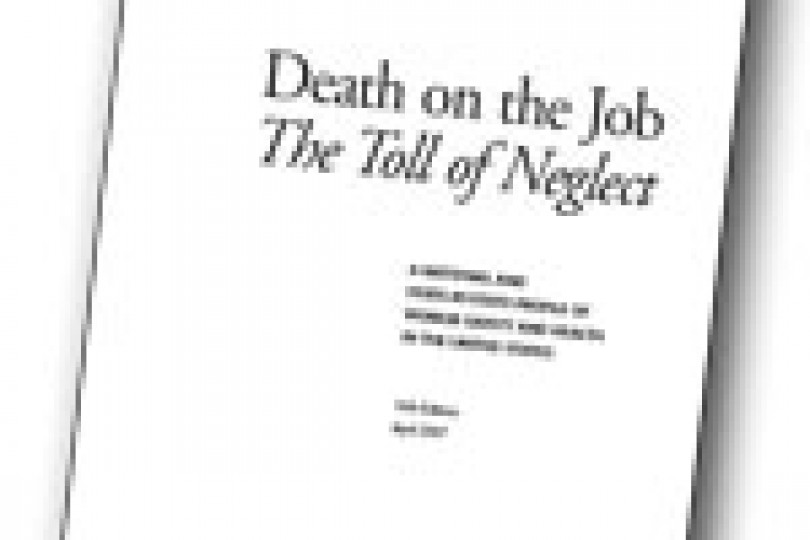However, safety and health progress slows, report says
WORKER FATALITIES FROM traumatic injuries on the job declined slightly in 2005 from the previous year — 5,734 compared to 5,764 — according to an AFL-CIO report. Now in its 16th edition, the report, titled “Death on the Job: the Toll of Neglect,” provides national and state-by-state profiles of worker safety and health in the United States. The report uses the latest data from the U.S. Bureau of Labor Statistics (BLS).
While worker deaths declined overall, deaths among Hispanics — both foreign-born and native-born — increased by two percent over 2004, to 923, the highest number ever reported. The fatality rate among Hispanic or Latino workers in 2005 was 23 percent higher than for all U.S. workers.
BLS figures showed that job injuries and illnesses in the private sector also declined slightly in 2005, to 4.2 million compared to 4.1 million in 2004. Although the report relies on government statistics for occupational injuries and illnesses, it stresses that these statistics are flawed. The report cites numerous studies that show BLS numbers in this area are underestimated by as much as 69 percent.
“Death on the Job” reported that overall the progress of worker health and safety has slowed. The report faulted the Bush Administration for cutting back enforcement staff and enforcement budgets from the nation’s two chief safety agencies: OSHA (the Occupational Safety and Healthy Administration) and MSHA (the Mine Safety and Health Administration). It also charged the Bush Administration with halting or delaying the implementation of important safety agency standards and rules. “Overall, dozens of OSHA and MSHA standards were pulled from the Administration’s regulatory agenda,” the report stated, “including MSHA standards on mine rescue teams, self-contained self-rescue devices, and escape ways and refuges which may have helped to prevent the fatalities at the Sago mine.” The Sago mining disaster occurred in West Virginia on January 2, 2006, killing 12 of 13 trapped miners.
Another negative factor in worker safety and health has been a greater emphasis placed by OSHA and MSHA on voluntary efforts and partnership programs with industry, the report found. “This trend may now be reversing as a result of the recent mining disasters and the election of a Democratic Congress that places a higher priority on job safety enforcement,” the report said.
The report found that jobs for some workers are becoming more dangerous, citing a changing economy and workforce, and new and emerging hazards such as bioterrorist threats and pandemic flu. “We are falling further and further behind in our efforts to protect workers,” the report stated.
States with the highest fatality rates include Wyoming (16.8 per 100,000), followed by Montana (10.3), Mississippi (8.9), Alaska (8.2), South Dakota (7.5), and South Carolina (6.7). States with the lowest fatality rates include Rhode Island (1.1), Vermont (2.0), Maine (2.2), Hawaii (2.3), Massachusetts (2.3), and Michigan (2.3).
Economic sectors with the largest number of fatal work place injuries included construction (1,192), followed by transportation and warehousing (885), and agriculture, forestry, fishing, and hunting (715). Sectors with the highest rate of fatalities per 100,000 included agriculture, forestry, fishing, and hunting (32.5), mining (25.6), and transportation and warehousing (17.7).






